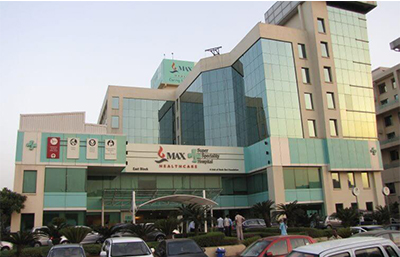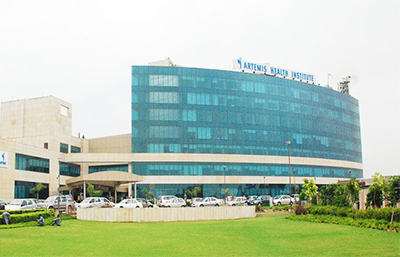Robotic Surgery

Robotic Surgery or Surgical robots have had clinical use since the mid 1990s. Robot-assisted surgeries offer many benefits over the conventional approach including lower risk of infection and blood loss, shorter recovery, and an overall safer procedure for patients. The past few decades have shown many emerging surgical robotic platforms that can work in complex and confined channels of the internal human organs and improve the cognitive and physical skills of the surgeons during the operation. Advanced technologies for sensing, actuation, and intelligent control have enabled multiple surgical devices to simultaneously operate within the human body at low cost and with more efficiency. Despite advances, current surgical intervention systems are not able to execute autonomous tasks and make cognitive decisions that are analogous to that of humans.
Types of Robotic Surgery
- Robotic prostate surgery: Robotic prostate surgery makes use of smaller incisions to get the job done and this leads to much faster recovery time for patients. In conventional open surgery, a large incision is made in the abdomen of the patient. Through this, the surgery is performed while ensuring that the blood vessels and nerves are not damaged in the process. Robotic prostate surgery gives a more promising result since the chances of damage to delicate areas are less in this case. Moreover, surgery with a robotic surgical system is more precise.
- Robotic kidney surgery: Robotic kidney surgery might be required when one kidney or a part of a kidney needs to be removed. In traditional open surgery, a large incision, up to eight inches, might be required in order for the surgery to be performed. However, when Robotic Surgery is performed, the size of the incisions is much smaller and it is a minimally invasive procedure. Robotic kidney surgery for kidney conditions allows faster time for the body to heal and patients can resume daily activities in a comparatively short span of time.
- Robotic gynaecological surgery: Robotic gynaecological surgery means less pain after surgery and lesser blood loss. In traditional surgery, there is significant pain involved in any gynaecological surgery and there is usually physical trauma connected to the surgery as well. Moreover, large incisions are made in open surgery and this means longer recovery process. With Robotic Surgery, the incisions are much smaller and the recovery times are fewer which is a favourable situation compared to open surgery
- Robotic gallbladder surgery: Robotic gallbladder surgery includes cholecystectomy which means removing the gallbladder. With the help of robotic surgical systems, surgeons can now perform the surgery with a single incision. This means fewer scars and the healing time is much lesser because of the lesser loss of blood compared to open surgery. Gallbladder surgery with robotic surgical systems is more beneficial to the patient as they can return to work much faster than if they had conventional open surgery.
- Robotic colorectal surgery: Robotic colorectal surgery might be required in the case when a patient requires colectomy or has other conditions such as a benign tumour. Using robotic surgical systems, surgeons can better perform colon surgeries that were deemed impossible in the past. Smaller incisions and other benefits ensure that the nerves are not damaged when the surgery is being performed. In addition, tissue cutting is made a lot easier with robotic surgical systems since the view is much better and the precision is top-notch.
Advantages of Robotic Surgery:
The surgeon has a better view of what is happening during the operation which enables him/her/them to see better and make better decisions.
- Robotic surgeries always mean less tissue damage for the patient which helps in faster recovery.
- There are fewer chances of getting an infection when Robotic Surgery is performed with smaller incisions.
- Patients experience lesser pain during Robotic Surgery due to the incisions that are much smaller compared to traditional surgery.
- There is minimal blood loss when Robotic Surgery is performed and this means lesser blood transfusions are required as a result.
- The surgeon has better access to the area where the operation is taking place because of the high-resolution camera that is used to show real-time images of the area.
- Robotic surgeries allow complex surgeries to be performed that aren’t possible with traditional methods.
- Robotic surgeries provide faster recovery times and fewer chances of infections for incisions that are much smaller.
- The scars are less visible when robotic surgeries are performed when compared to traditional surgeries.
- Robotic surgeries mean fewer complications due to surgery. Although there might be complications, the likelihood is much smaller.
- There is no need to stay for a long time at the hospital. In traditional methods, you might be required to stay for weeks but in most robotic surgeries that’s not the case.
- The surgeon has better flexibility and dexterity compared to traditional methods as s/he has clearer visuals.Robotic Surgery is far more precise compared to traditional surgery methods because of the instruments and the precision of the robot.
- Robotic Surgery is far more precise compared to traditional surgery methods because of the instruments and the precision of the robot.
There are some risks associated with Robotic Surgery and one of them might be a small infection. As with any surgery, there might be bleeding and the patient might experience breathing problems as a result of the surgery. The risks associated with Robotic Surgery are similar to open surgery although the risks are considerable lesser.









